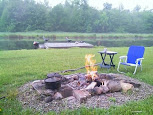Depression in gifted adolescents and adults is not just ordinary depression, a common cold mood disorder. Depression in gifted creatives is more often a ‘failure to thrive’ syndrome; the result of an emotional nutritional deficiency.
Witness two examples:
My day begins when Steve brings in an assemblage of three 20/30 somethings into the conference room to review our public marketing efforts. Three truly bright minds that are not only gifted creatives, but exude the joy in being able to do what each loves most to be doing; persuasive writing, website design, or data analysis, To be able not only to get paid for it, but to also engage in joint ventures with likeminded others - it doesn’t get any better than this!
Only hours later, an articulate young man, not dissimilar in age, comes into the office with complaints of depression, explaining he is in a no- brainer job with little opportunity for creativity, feels stuck in a neighborhood with constant street noise, and is in a relationship with little lasting stability. He complains is life does not allow the quiet or solitude necessary for the writing, playing and recording of his music, or for quiet sketching as a form of relaxation. Intuitively, I sense this man is creatively gifted, no different from the three who had been in the conference room.
What happened to him is that without the interaction with other gifted individuals, his own creatively does not grow. With little serenity or solitude, he cannot find his own center for nurturance and renewal. Gradually, his psyche slipped into a malaise, much like a small child who learns that he cannot count on his mother or the world for nurturing.
The course and style of treatment here is different, not limited to antidepressant medication and a few supportive nods of the head. Just my recognition, articulation, and validation of this issue brought a sense of connection, relief, and hope to this young man.
While I cannot keep you apprised of his progress, over the next few weeks I will be writing a series of posts on gifted individuals addressing the following questions:
- What are the characteristics of Gifted people that makes them “different” from others?
- How is their mood management a different issue?
- What does it mean to grow up “different” when your parents, siblings, school mates, spouse or children don’t “get you”?
- How is creativity and solitude or loneliness linked together?
- Couples: Creative couples.
- - How do they find each other?
- - What happens when two gifted people find each other?
- - What does it take to keep this relationship truly vital for years?
Working with these gifted persons is one of the more fascinating and fun aspects of my work.


















